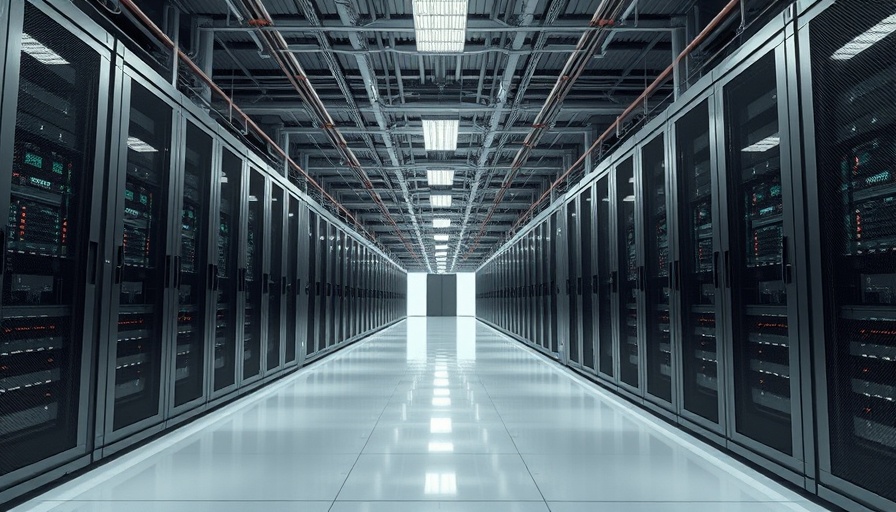
The Impact of Microsoft's Data Center Strategy on AI Development
Microsoft's recent decision to cancel data center leases totaling around 200 megawatts has sent ripples across the tech industry, particularly among AI enthusiasts. This move raises questions about the tech giant's projected expansion in artificial intelligence, particularly in light of competition from innovative upstarts like DeepSeek. The situation presents an opportunity to explore how Microsoft and its competitors are navigating the evolving landscape of AI.
Why Did Microsoft Pull Back?
Analysts at TD Cowen suggest that Microsoft could be experiencing an oversupply of data center capacity, prompting the company to scale down its operations. This has brought to light potential changes in Microsoft's strategic partnerships, particularly with OpenAI, their largest investment in AI technology. With OpenAI now diversifying its cloud-computing options, including a significant deal with Oracle for a $500 billion project, it’s clear that Microsoft’s previous cloud service monopoly is being challenged.
The Rise of Competitive Pressure in AI
The competitive landscape intensified when DeepSeek announced its generative chatbot, developed at a fraction of the time and cost it took U.S. companies. This has not only unnerved investors but also prompted a re-evaluation of how companies like Microsoft forecast AI demands and resource allocation. The dip in confidence regarding escalated AI expenditures becomes particularly significant as NVIDIA prepares to announce earnings that are projected to show reduced revenue growth.
Microsoft's Long-Term Strategy for AI
Despite the recent setbacks, Microsoft has pledged a remarkable $80 billion toward infrastructure for AI in 2025. However, the juxtaposition of trimmed expenses against such ambitious investment raises eyebrows about their financial strategy moving forward. Moving millions into U.S. operations indicates a shift in focus, suggesting Microsoft is strategically positioning itself for future AI demands but cautious of over-committing to infrastructure.
What This Means for AI Lovers
For AI enthusiasts, understanding Microsoft’s pivot is essential. The company's challenges potentially signal a broader trend in the tech industry concerning the viability of massive spending plans in the rapidly evolving AI space. It's crucial to recognize that companies may reconsider which AI projects and partnerships to pursue while keeping a close eye on competition from nimble companies.
Looking Ahead: Future Trends in AI Investment
The coming months will be critical in determining how Microsoft's strategic pivot affects its partnerships, especially with AI trailblazers like OpenAI. The nuances of this dynamic could signal a shift in how large corporations approach innovation. For AI lovers, staying engaged with these developments is crucial, as they foretell where investment focus lies and which tech developments might be on the horizon.
Conclusion: Staying Informed in an Evolving AI Landscape
As the AI landscape continues to evolve, especially with competitors becoming formidable, it's vital for enthusiasts to keep abreast of these changes. Microsoft’s decisions may redefine the playing field and should reflect a cautious trajectory instead of the robust expansions previously anticipated.
 Add Row
Add Row  Add
Add 




 Add Row
Add Row  Add
Add 

Write A Comment